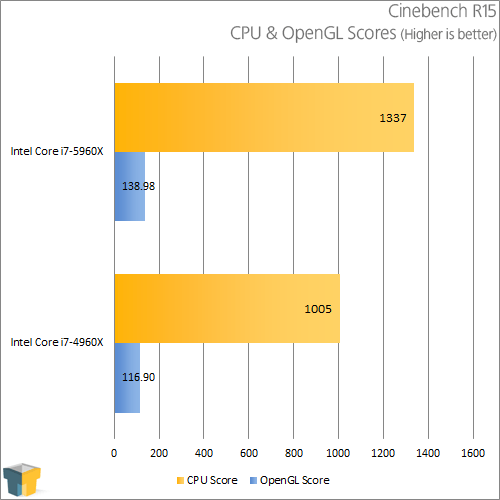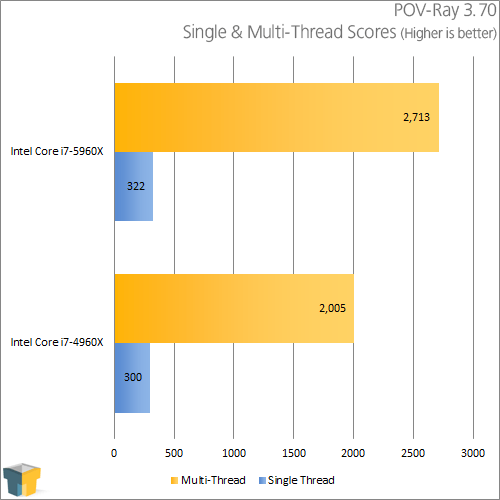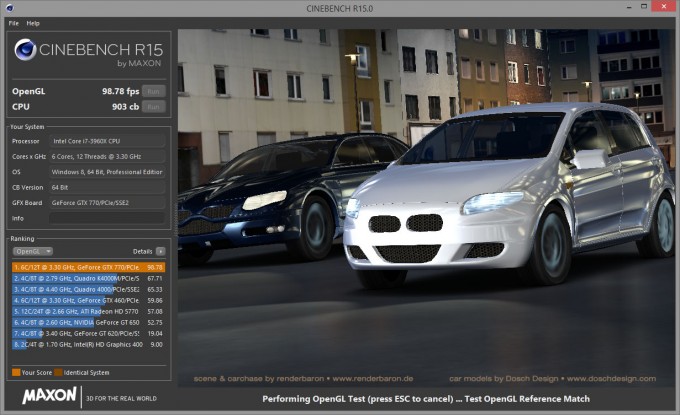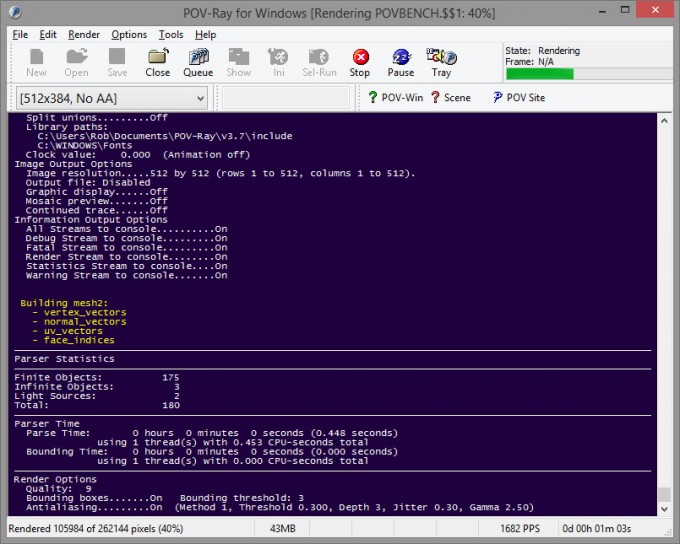- Qualcomm Launches Snapdragon 4 Gen 2 Mobile Platform
- AMD Launches Ryzen PRO 7000 Series Mobile & Desktop Platform
- Intel Launches Sleek Single-Slot Arc Pro A60 Workstation Graphics Card
- NVIDIA Announces Latest Ada Lovelace Additions: GeForce RTX 4060 Ti & RTX 4060
- Maxon Redshift With AMD Radeon GPU Rendering Support Now Available
Core i7-5960X Extreme Edition Review: Intel’s Overdue Desktop 8-Core Is Here

In late 2011, I wagered that Intel would follow-up its i7-3960X with an eight-core model within the year. That didn’t happen. Instead, we have had to wait nearly three years since that release to finally see an eight-core Intel desktop chip become a reality. Now for the big question: Was the company’s Core i7-5960X worth the wait?
Page 4 – Workstation: Cinebench & POV-Ray
Like Autodesk’s 3ds Max and Maya 3D tools, Maxon’s Cinema 4D is a popular cross-platform 3D design tool that’s used by new users and experts alike. Maxon is well-aware that its users are in need of some rather beefy PC hardware to help speed up rendering times, which is one of the reasons the company itself releases its own benchmark, Cinebench.
There are a couple of reasons we like to use Cinebench in our testing. For one, it’s freely available for anyone to download, unlike our Autodesk-based tests. Second, it has the capability to scale up to 64 threads, which means we’ll easily be able to rely on it for quite some time. As a faster CPU can also help improve the GPU computational pipeline, we also like that it includes an OpenGL benchmark as well. The fact that the benchmark completes in a minute or so is another perk.

Here’s that 33% gain we were looking for. And yes – our test on the i7-5960X did actually score 1337.
POV-Ray 3.70
The “Persistence of Vision Ray Tracer” is a multi-platform ray tracing tool that allows you to take your previously-created environments and models and apply a ray tracing algorithm based on a script you either created yourself or borrowed from others. The tool is free and has become a standard in the ray tracing community, with some of the ‘Hall of Fame’ results able to be found here.
For our testing, we run the built-in benchmark in both single-threaded and multi-threaded mode. The results are presented in “pixels-per-second” – a simple metric, but one that’s easy to understand.

It’s with this benchmark that I found myself a little dumbfounded. The i7-4960X has a Turbo speed of 4GHz, while the i7-5960X peaks at 3.5GHz. Despite that 500MHz drop, Intel’s eight core managed to perform better in the single-thread test. Also interesting is that it managed to surpass a 33% gain in the multi-thread test, hitting 35%.
At this point, I can’t establish the reason for this gain, although I think it’s safe to say that clock-for-clock, Haswell-E is going to be quicker at synthetic tests anyway. Still, this is a notable result given the reduced clock speed of the eight-core chip.
Support our efforts! With ad revenue at an all-time low for written websites, we're relying more than ever on reader support to help us continue putting so much effort into this type of content. You can support us by becoming a Patron, or by using our Amazon shopping affiliate links listed through our articles. Thanks for your support!







